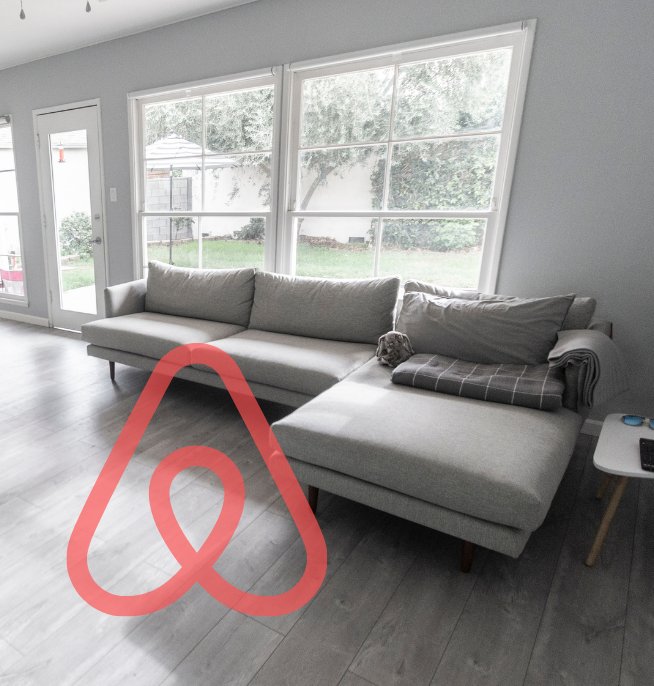Maybe you’ve missed out on a deal, you weren’t able to upsell, maybe you undercharged but could have raised your prices. Or maybe you left money on the table because you simply didn’t follow up!
Working with so many business owners who have soul, big beautiful values, and are full of integrity, I know that leaving money on the table is a real problem. Feeling a little defeated and scantily marketing yourself because you don’t want to be a bother to people is a real problem. Especially if you’re ‘getting by’ and living the feast and famine roller coaster.
I’ve already covered a fair bit on the topic of pricing, raising your prices, and breaking the boom and bust cycle. I want to talk about the money you’re leaving on the table. And not in the hardcore sense of negotiations and showing weakness if you don’t hardball your sales. I’m talking about the money you’re leaving on the table because you’re not fully selling yourself and you’re not following up!
For a moment, I’m assuming that you have your value ladder and your sales process zipped up. I don’t want to talk about rapport, objections, and closing. This is about follow-up.
By the way, your value ladder should be designed to maximise what you can do to solve problems for your clients along the ladder. Starting with low ticket and moving up to your high ticket offers and never underestimate the power of a micro-offer to get someone in the door. If you want more on this, maybe I’ll do a whole other piece on building out a value ladder for your business. Let me know.
Follow up, follow up, follow up
You’ve heard the phrase ‘the fortunes are in the follow up’, you know this but are you doing it?
When I first start working with a new client, one of the first places we go is to find quick wins and it’s often in the follow-up. For reasons that are aplenty, there’s a hesitancy to follow up, a feeling that you’re bothering people. In a conversation yesterday with a client, he said, “I haven’t followed up because I figured if he wanted the project he’d have contacted me”.
I’m going to share a real-life example to show you why this way of thinking is absurd. I had a new business inbound enquiry to my business in February this year. We met online, then we had a face-to-face, I put a lot of work into the proposal. We had a follow-up meeting that was booked, rescheduled, booked, rescheduled, missed. I then got busy, it fell off my radar. After a couple of weeks, I thought it was too awkward to follow up because time had gone on a bit. I had a word with myself, told myself what I’d tell clients and I followed up. Guess what, he’d been super busy and he forgot so he thought “oh well, I’ll wait for Sian to follow up.” Exact words.
I would have left a serious, serious chunk of change on the table if I hadn’t followed up. It’s all systems go and boy am I glad I followed up.
You have put all this effort into generating leads, having discovery calls, talking to business owners to find their needs, and in some cases put together really elaborate proposals. Your job isn’t done and dusted once you’ve pressed send. You have to follow up to follow through.
Your follow-up is the final step to the sale and please don’t think you can follow up once and that’s it, tick, you’re done. Your follow-up process needs to be exceptional, it needs to continue positioning you as the expert you can guide your potential new client through the problem you’re solving for them, and it needs to continue adding value.
There are six success factors to follow up
1. Keep adding value
What do I mean? After your sales meeting or discovery call, your potential client is hopefully as enthused as you are and you don’t want that to cool off. Follow up with an email as soon as you get back to the office with a thank you and if possible keep adding value.
Example. I had a face-to-face meeting with a potential new client this week, during the meeting you’re gathering as much as you can. I learned that their sales team isn’t quite leveraging LinkedIn as well as they could so I offered to share some tips and training I’d recorded. I got straight back, thanked them for the meeting, and popped over the free training.
2. Keep the loop open
If you’ve built rapport with your prospect, you’ve learned something about them. Maybe they have told you about a trip, something about their family, or anything personal. It makes a great impression if you can reference the details in your follow-up and really show that you care.
I have too many examples to share on this topic but you want to keep the loop open. By someone saying that they love motorbikes, I might suggest in our next call that I share a story about the time I met John MgGuinness at the Isle of Man TT. Keeping the loop open, you’ve planted the seed that we’re going to speak again.
3. Provide what they need to make a decision
As you’ve left the meeting, the discovery call and at times prospects need to go away and discuss things internally. Make sure you follow up and position your message with whatever your potential client needs to believe to make a decision. Whatever that is will be different and it’s something to ask your team so you can workshop this out.
What does your prospect need to believe to make a decision to work with you?
Example. On a coaching call last week with a client, we were talking about the follow-up calls. One of my client’s prospects said on the call, “well, why should we do this externally and not do it in-house?” Boom. That’s gold right there! If we put together a Q&A sheet, a document with the pros and cons of contracting out their particular service versus doing it in house and position all the benefits and use this as a tool in the follow-up stages, I don’t need to tell you how that’s going to leverage a competitive edge.
4. Make it really personal
I remember once my Uncle Allister, a hugely successful businessman saying that your best clients should be best friends. You break bread together and he said that all his best clients had been to his home. Ever since he said that to me and I shifted to think about sales as making friends, it’s no longer a numbers game but a people game. Those shifts were the moments that I started to love sales. Believe it or not, sales wasn’t always my favourite thing and I struggled a lot, it wasn’t in my DNA and I’ve had to break through lots of barriers. You can too.
I’ve been to clients' weddings, their kid’s 18th birthday parties, their Christenings. I've bought a house from one client and become such great friends with another we've had weekend trips planned. Isn’t that a whole load more fun than focusing on a “close”? I think so.
Of course, if you have hundreds and hundreds of clients you’re not going to be besties with everyone but the mindset shift is a game-changer. The more the merrier I say.
5. Actually follow up
Getting practical for a moment you actually need to follow up. You need to have a systematic process for following up with prospects, have it mapped out, have it scripted out, have it diarised, and actually get it done.
If you need help with the script, shoot me a DM I can hook you up. But your sales process after a discovery call or meeting should have a minimum of eight high-value touchpoints.
A ‘thank you’ after the meeting, a call to follow up, a piece of high-value content, another email or a letter, and anything else that can help them where they are now and take a step towards their goal. Movement creates momentum and when you have momentum you’ll pretty much be unstoppable.
You don’t have to stick to the usual things like emails. Invite your prospect to a webinar, it can be something physical, sending them a book you recommended when you were chatting… whatever it is be creative, personal but do the follow-up. (A side note, my husband was once working for a large construction firm and a potential supplier took him and his team out to the York Races for a day, that was years ago and he still talks about it and still talks about that company!)
6. Be consistent, be persistent
If I can leave you with a parting thought, it’s this - you need to be consistent in your follow-up, determined, and persistent. Until you get a no, which is also another conversation, you have to keep at it. Become obsessed with it, persistent, and determined.
Sure, you might get to a point where you've exhausted all avenues. You definitely want to find out, if a client didn't go ahead, what the reasons were so you can close it out and work on things to improve.
So here's my question to you...
Is it possible that you could spend 30 minutes every two days or 90 minutes a week dedicated to follow-up? If I told you the size of that deal in the example earlier, you’d absolutely find 90 minutes a week to create a follow-up process, script it out, and put it into motion. What are you waiting for?
If you keep adding value, you’re making friends (not sales) and you’re guiding your prospect to make the right decision for their business, well in my book that’s the right thing to do. It’s not sleazy sales tactics, spamming people, or forcing them to get their credit cards out. I hope that helps if you’ve had any limiting beliefs around the topic of follow-up and leaving money on the table.
If you'd like a blueprint, script, or anything else that will help you craft your winning follow-up process, let's have a 15 minute clarity call and I'll hook you up.



